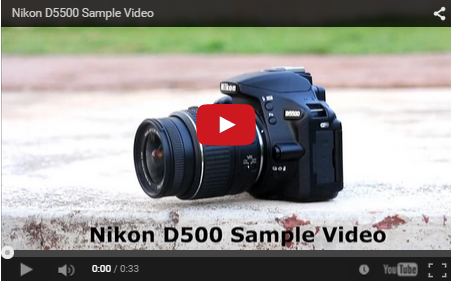A couple of weeks back, Nikon Philippines allowed us to play around with the Nikon D5500, the company’s latest entry-level dSLR camera which serves as a successor to the D5300.
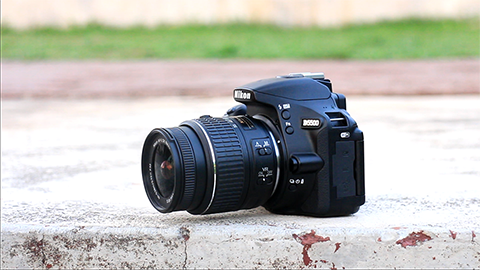
Design and Construction
By and large, Nikon has not made any significant changes on the design and make of its new dSLR camera, at least not easily noticeable. The company did, however, make some minor tweaks on the layout of some of the buttons and, for better or worse, gave the new model a redesigned grip which we’ll get to in a bit.

Instead of a pointy grip found on its predecessor, the D5500 sports a somewhat flat and rounded grip.
Contrary to our initial thoughts, the redesigned grip didn’t make the grip shallower despite being less protruding compared to the previous model. This is, in large measure, thanks to the slight adjustment that Nikon made on the portion near grip.
Because of the redesigned grip, Nikon had to make some minor reshuffling in the placement of some of the buttons. The company had to move the ‘info’ button over to the back of the camera, on the spot where the ‘i’ button previously occupied.
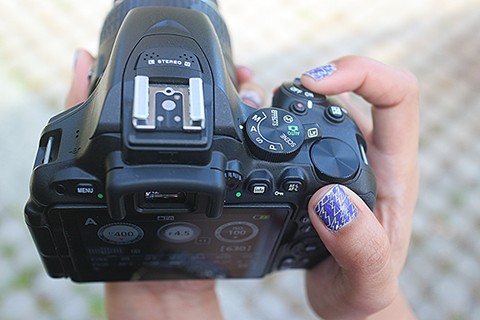
Nikon also made the mode dial a tad smaller to make room for the bigger and more sophisticated-looking rear dial which was previously perched just above the rubberized thumb rest.
The ‘i’ key that was evicted from its spot near the ‘record’ and exposure compensation buttons is relocated at the back of the camera near the image preview button. Other than that, the only other changes was the diopter adjustment which Nikon made a bit bigger to make it easier to adjust.
Controls and Ergonomics
Despite these subtle design improvements, existing Nikon dSLR users should feel right at home with the D5500. The new arrangement of some of the buttons and the addition of the redesigned rear dial might throw off existing Nikon users a bit, but it shouldn’t take too long before they get the hang of it.
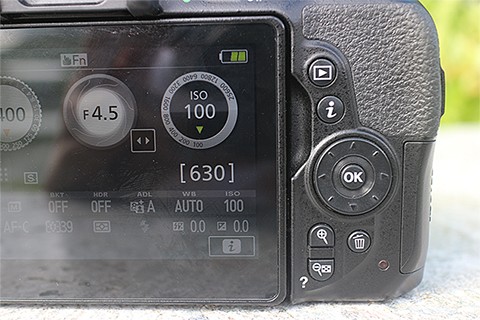
The compact and lightweight nature of the D5500 means that users can pretty much take this camera anywhere with them. Its size and simplicity also make the camera less intimidating for beginners compared to the bulkier and more powerful siblings in the upper tier of Nikon’s dSLR lineup.
We didn’t have any major gripes about the D5500’s design during our short time with it. We think that Nikon did a fine job of thoughtfully mapping out where each of the buttons and dials should be and designed these external controls to provide a good tactile feel (buttons), satisfying clicks (dials), not to mention easily accessible to the user.
Viewfinder and Live View
Another notable design improvement that Nikon made on the D5500 is the addition of the eye-sensor which sits just above the optical viewfinder. This allows the camera to automatically switch to live view mode and vice versa when it detects that the user is peeking through the OVF.
This feature is enabled by default, albeit users can manually disable it inside the camera settings. Users can also manually switch to live view mode by toggling the Live View switch which is placed on the right side of the shooting mode dial.

The Nikon D5500 inherits the same optical viewfinder of its predecessor. It’s got 95% coverage with a 0.82x magnification which puts it at par with some of its APS-C dSLR contemporaries.
Although Nikon also kept the same size and resolution of the screen of the older model, the company gave the D5500 a touchscreen panel. Depending on your shooting preference, the addition of the touchscreen display should be a nice addition to the D5500’s feature set.
On the other hand, for the type of users like us who prefer to fiddle around with physical keys and dials, the touchscreen panel is just more of a luxury than necessity.
Autofocus Performance
Being more of an beginner’s camera than a professional one, we didn’t expect a lot from the D5500 as far as its autofocus prowess is concerned. But only after an entire day of shooting, the camera actually exceeded our modest expectations.

The 39-point (9 cross-type) AF system that it inherited from its predecessor allows the D5500 to focus on the subject at a respectable rate. On top of that, the camera is equipped with the new 3D subject tracking feature which really came in handy when we shot moving subjects like the one above.
The 3D subject tracking feature works best when the subject fairly stands out from the scene. With that being said, your mileage will vary depending on your technique and condition that you’re shooting in.
Noise and ISO Performance
In addition to its AF system, the D5500 also inherited the same ISO range (100 to 25,600) from its predecessor. However, what is not listed on its specs list is that it also shares the same ability to deliver respectable snaps even at high ISO settings like the D5300.

1/125, ISO 1000 @ f/5.6
The pictures that we took at ISO 1600 still has a respectable amount of detail in it. As we slowly bump up the ISO 3200 and above we noticed that some noise started creeping in, albeit still very usable.
It is only when we got to ISO 6400 that the noise really started to be more prominent although not something that should concern average users who are not in to pixel peeping. Anything beyond that point though is really not recommended as users will more likely end up with a mushy mess than a decent picture.
Image and Video Quality
Considering that not much has changed in the inner working of the D5500 from the older model, we expected to see a near-identical output from this camera in terms of quality.
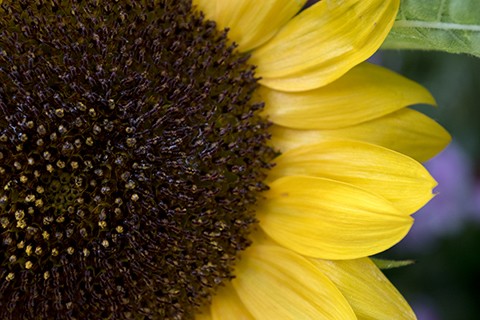
True enough, Nikon’s new compact DSLR exhibited admirable traits like good color reproduction, acceptable sharpness and commendable ability to retain most of the details in the scene. Sadly, the camera’s potential is hampered by its under-performing kit lens, so we highly suggest investing on a good lens to get the most of this camera.

Another thing that we like about this camera is that it allowed us to recover a great deal of clipped details from the scene when we shot in RAW format. Depending on your post-processing workflow/technique, you should be able to significantly bring back lost details in blown-out highlights and/or uber-dark shadows but not at the cost of too much noise.
This feature isn’t something that beginner’s would find useful, but would certainly be appreciated by more advanced users who love to tinker with their compositions in their chosen post-processing platforms.
Like the camera model before it, the Nikon D5500 can also record at 60fps for both 1920 x 1080 and 1280 x 720 resolutions. Users will be limited to 10 minutes when shooting at Full-HD resolution, and twice as long when they drop the resolution down to 720p.
What’s new with this model though is the addition of the Flat Picture Control mode. It’s the same video feature we saw on the D810 which allows the camera to capture scenes with better dynamic range and contrast.
Not only that, the new video mode gives users more control over some of the aspect of the video using video post-processing software.
Battery Life
Despite using the same battery pack (EN-EL14/EN-EL14a) as the D5300, the Nikon claims that the D5500 will be able to achieve slightly better mileage (820 vs 700 shots) thanks to some of the improvements they made on how the camera consumes battery. Of course, your mileage will vary depending on how you use your camera.
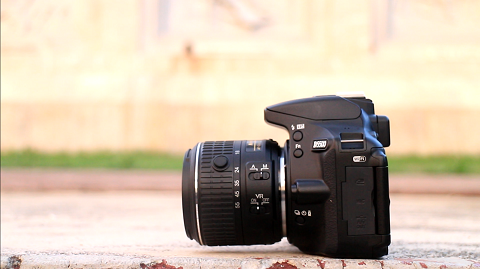
At end of one whole afternoon of shooting with the D5500, when we ended up taking almost 400 pictures and a few short videos that equates to about 10 minutes in length, we only managed to shave a bar from the battery indicator which meant that battery pack still has a lot of juice in its tank (at least according to the battery indicator).
Conclusion
In recent times, we noticed that Nikon has fallen in to a trend of releasing a new version of their DSLR camera almost once every year. But instead of giving the new models a complete design/feature overhaul, these “new” models are mostly a reincarnation of the old ones plus the addition a few new features here and there to make it more relevant in the market (or have some talk points during the product launch).
The upside to this kind of strategy though is that existing users of the camera from last year will not feel so left out even with the release of the new version. And that’s exactly how we feel about the Nikon D5500.
Nikon D5500 specs:
24.2-megapixel DX-format CMOS sensor (no OLPF)
EXPEED 4 image processing
ISO 100-12800 (25600 with boost)
39-point AF system
ISO 100 – 25,600
30 secs to 1/4000 shutter speed
Optical Viewfinder, 95% coverage @ 0.82x magnification
Built-in flash, GN 12m at ISO 100
Optional External Flash via Hot shoe
3.2-inch Articulating Touchscreen display, 1.04M-dot resolution
1080p video recording at 60fps
5fps continuous drive
Wi-Fi 802.11 b/g/n
EN-EL14 / EN-EL14a (800 shots per charge)
Dimension: 124 x 97 x 70 mm
Weight: 420g
Colors: Black or Red
Price: Php42,900 (D5500 w/ 18-55 VR II kit lens)
For what it’s worth, the D5500 has all the right tools to become a solid contender in the entry-level DSRL department. It’s just that the new features that Nikon has added are just not compelling enough for existing D5300 users to upgrade.
It is, however, a different case if you’re upgrading from an earlier version of a D5000 series camera or if you’re in the market for your first DSLR camera. If that’s the case, then this camera should be among the top of your list.
What we liked about it:
What we didn’t like about it:
The post Nikon D5500 Review appeared first on YugaTech | Philippines, Tech News & Reviews.






















